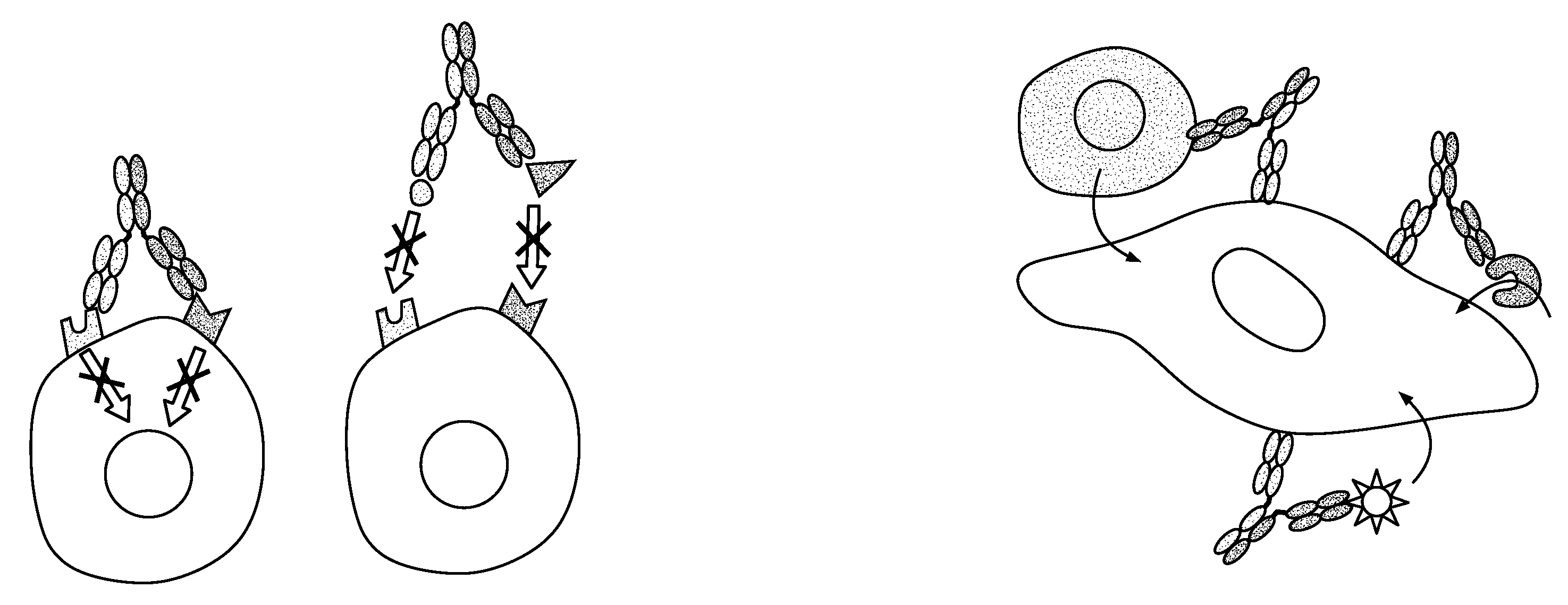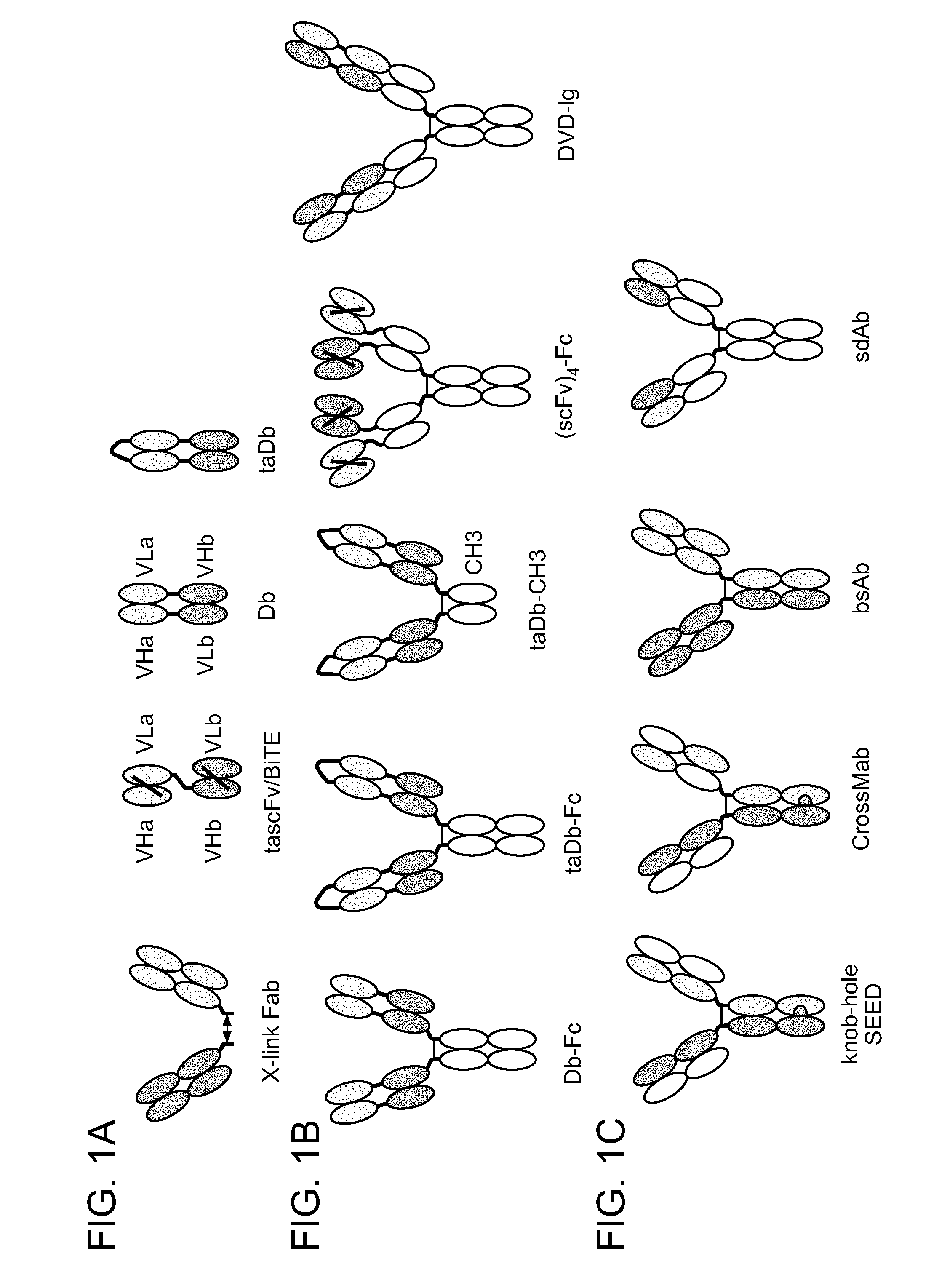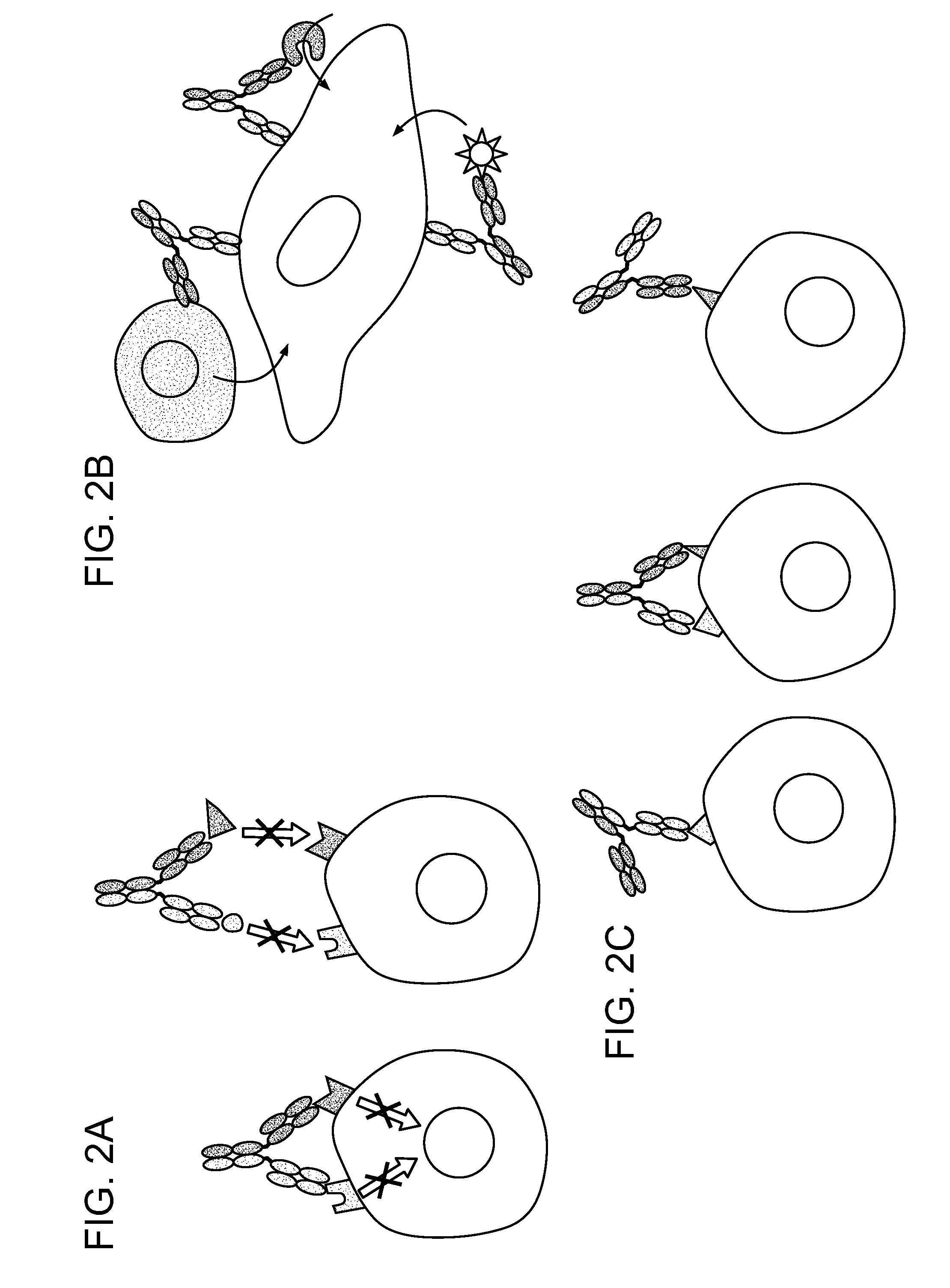Methods For The Generation Of Multispecific And Multivalent Antibodies
a monoclonal antibody and multivalent technology, applied in the field of multispecific and multivalent antibodies, can solve the problems of limited therapeutic use of monoclonal antibodies, insufficient neutralization of one component of a biological system, and insufficient targeting or neutralizing a single protein, etc., to achieve favorable manufacturing characteristics
- Summary
- Abstract
- Description
- Claims
- Application Information
AI Technical Summary
Benefits of technology
Problems solved by technology
Method used
Image
Examples
example 1
Generation of Antibody Libraries Having Fixed Heavy Chains
[0102]Antibody libraries in which the heavy variable domain is identical for all the library members were generated as follows. First, the heavy chain variable VH3-23 domain containing a defined CDR3 AKSYGAFDY (SEQ ID NO: 1) (CDR nomenclature according to IMGT) and a defined FR4 sequence was cloned into the pNDS vector using the SfiI and XhoI restriction sites to obtain the phagemid vector pNDS_VHfixed. The amino acid sequence of VK FR4 corresponds to the FR4 region encoded by the germline J genes JK1. The amino acid sequence of Vλ FR4 corresponds to the FR4 region encoded by the germline J genes JL2 and JL3. Two variants of the Vk FR4 sequence were generated with a single amino acid substitution at position 106 (Arginine or Glycine). A total of 6 Kappa (VK1-33, VK1-39, VK3-11, VK3-15, VK3-20, VK4-1) and 5 Lambda variable domain genes (Vλ1-44, Vλ1-51, Vλ6-57, Vλ2-14, Vλ1-40) containing a stuffer fragment instead of a CDR3 enc...
example 2
Phage Rescue of the Libraries
[0103]Each library was rescued independently according to standard phage display procedures briefly summarized hereafter. A volume of cells from the frozen library aliquots sufficient to cover at least 10 times the theoretical diversity of the library was added to 500 ml of 2×TYAG (100 μm / ml ampicilin; 2% glucose) and grown at 37° C. with agitation (240 rpm) until an OD600 of 0.3 to 0.5 was reached. The culture was then super-infected with MK13KO7 helper phage and incubated for one hour at 37° C. (150 rpm). The medium was then changed by centrifuging the cells at 2000 rpm for 10 minutes, removing the medium and resuspending the pellet in 500 ml of 2×TY-AK (100 μm / ml ampicilin; 50 μg / ml kanamycin). The culture was then grown overnight at 30° C. (240 rpm). The culture was centrifuged at 4000 rpm for 20 minutes to pellet the cells. The supernatant was collected and 30% (vol / vol) of PEG 8000 (20%) / 2.5M NaCl was added to precipitate the phage particles by inc...
example 3
Phage Display Selections Using Fixed Heavy Chain Libraries
[0104]Liquid Phase Selections Against Biotinylated hCXCL10-NusA Fusion Protein (hCXCL10-NusA) and Biotinylated hIL6 Receptor Complex (hIL6RC):
[0105]Aliquots of the VH-VK and VH-Vλ phage libraries (1011-1012 Pfu) were kept separated and blocked with PBS containing 3% (w / v) skimmed milk for one hour at room temperature on a rotary mixer. Blocked phage was then deselected on streptavidin magnetic beads (Dynal M-280) for one hour at room temperature on a rotary mixer. Deselected phage was then incubated with in vivo biotinylated hCXCL10-NusA or hIL6RC (100 nM) for two hours at room temperature on a rotary mixer. Beads were added to the target and were captured using a magnetic stand followed by four washes with PBS / 0.1% Tween 20 and 3 washes with PBS. Beads were then directly added to 10 ml of exponentially growing TG1 cells and incubated for one hour at 37° C. with slow shaking (100 rpm). An aliquot of the infected TG1 was seria...
PUM
| Property | Measurement | Unit |
|---|---|---|
| volume | aaaaa | aaaaa |
| pH | aaaaa | aaaaa |
| pH | aaaaa | aaaaa |
Abstract
Description
Claims
Application Information
 Login to View More
Login to View More - R&D
- Intellectual Property
- Life Sciences
- Materials
- Tech Scout
- Unparalleled Data Quality
- Higher Quality Content
- 60% Fewer Hallucinations
Browse by: Latest US Patents, China's latest patents, Technical Efficacy Thesaurus, Application Domain, Technology Topic, Popular Technical Reports.
© 2025 PatSnap. All rights reserved.Legal|Privacy policy|Modern Slavery Act Transparency Statement|Sitemap|About US| Contact US: help@patsnap.com



